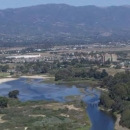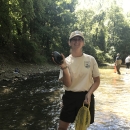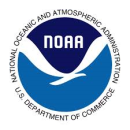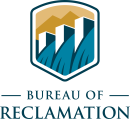States
CaliforniaEcosystem
Coastal, River/stream, WetlandPurpose and Intent
The purpose of the California Statewide Restoration Programmatic Consultation is to provide Section 7 Section 7
Section 7 Consultation
The Endangered Species Act (ESA) directs all Federal agencies to work to conserve endangered and threatened species and to use their authorities to further the purposes of the Act. Section 7 of the Act, called "Interagency Cooperation," is the mechanism by which Federal agencies ensure the actions they take, including those they fund or authorize, do not jeopardize the existence of any listed species.
Learn more about Section 7 (a)(2) consultation and facilitate implementation of aquatic, riparian riparian
Definition of riparian habitat or riparian areas.
Learn more about riparian , floodplain, and wetland restoration projects in California. The timeline of the programmatic consultation is 10 years (until August 31, 2032).
The intent of the programmatic consultation is fourfold:
- Promote consistency in project design
- Ensure consistency of conservation measures
- Expedite regulatory review
- Develop a reporting system
Action Agencies
- Bureau of Reclamation
- National Oceanic and Atmospheric Administration - Restoration Center and Office for Coastal Management
- U.S. Army Corps of Engineers - San Francisco, Los Angeles, and Sacramento Districts
- U.S. Fish and Wildlife Service Programs - Refuges, Partners for Fish and Wildlife, Fish and Aquatic Conservation, Conservation Investment, Coastal, Central Valley Joint Venture
Any federal agency interested in using this programmatic consultation for eligible restoration projects may join as a Late-Arriving Action Agency.
Action Area
The action area action area
All areas to be affected directly or indirectly by the federal action and not merely the immediate area involved in the action.
Learn more about action area includes all lands within the state of California.
Eligibility Criteria
To use the programmatic consultation, the proposed project must meet two overarching eligibility criteria:
- Restoration Project: the proposed project must be a covered project type and include appropriate protection measures that will result in a net increase in aquatic, riparian, floodplain, wetland, or coastal dune functions and services.
- Consistency with Recovery Plans: the proposed project must be consistent with covered species recovery plans or recovery-related documentation.
Eligible Project Types
There are a total of 10 project types that are eligible under the programmatic consultation:
- Improvements to stream crossings and fish passage;
- Removal of small dams, tide gates, flood gates, and legacy structures;
- Bioengineered bank stabilization;
- Restoration and enhancement of off-channel and side-channel habitat;
- Water conservation projects for enhancement of fish and wildlife habitat;
- Floodplain restoration;
- Removal of pilings and other in-water structures;
- Removal of nonnative terrestrial and aquatic invasive species invasive species
An invasive species is any plant or animal that has spread or been introduced into a new area where they are, or could, cause harm to the environment, economy, or human, animal, or plant health. Their unwelcome presence can destroy ecosystems and cost millions of dollars.
Learn more about invasive species and revegetation with native plants - Establishment, restoration, and enhancement of tidal, subtidal, and freshwater wetlands (including vernal pools and managed wetlands);
- Establishment, restoration, and enhancement of stream and riparian habitat and upslope watershed sites, including coastal dunes and managed wetlands.
Prohibited Activities
There are a total of 16 prohibited activities that are not covered under the programmatic consultation:
- Use of gabion baskets.
- Use of cylindrical riprap.
- Construction of permanent dams or concrete-lined channels.
- Use of chemically treated timber used for grade or channel stabilization structures, bulkheads, or other in-stream features.
- Activities that substantially disrupt the movement of aquatic species indigenous to the waterbody, including those species that normally migrate through the project areas.
- Elimination of a riffle, pool, or riffle/pool complex that is not replaced or enhanced elsewhere by the project.
- New water diversions that would cause listed aquatic species stranding, except to temporarily dewater a project site or for diversions associated with delivery or conveyance to and within managed wetlands.
- Installation of flashboard dams, headgates, or other mechanical structures that would cause listed aquatic species stranding are generally prohibited; however, there are exceptions for certain projects that require them to meet ecological goals (e.g., storage projects to reduce low flow stream diversions, off-channel/side-channel, managed floodplain, and managed wetland habitat) and for the required replacement of legacy structures.
- Creation or potential creation of a barrier to anadromous fish passage fish passage
Fish passage is the ability of fish or other aquatic species to move freely throughout their life to find food, reproduce, and complete their natural migration cycles. Millions of barriers to fish passage across the country are fragmenting habitat and leading to species declines. The U.S. Fish and Wildlife Service's National Fish Passage Program is working to reconnect watersheds to benefit both wildlife and people.
Learn more about fish passage , as determined by the NMFS fish passage guidelines (including any associated maintenance activities, or lack thereof). - Use of excess riprap bank protection or hard armoring of banks, other than the minimum amount needed to achieve project goals, as determined by the Lead Action Agency in coordination with the USFWS Field Office.
- Installation of infiltration galleries.
- Managed surrogate floodplain and managed returned flows that do not allow for volitional movement (ingress and egress) of fish to the main channel (up and/or downstream).
- Projects that would result in a net loss of aquatic resource functions and/or services.
- Projects that would result in a net loss of vernal pool habitat.
- Projects that would result in a net loss of designated critical habitat function for any federally-listed species. Loss of function is considered in the context of the physical and biological features as described in the respective critical habitat designation and includes abiotic and biotic resources and conditions necessary to support one or more life processes of the species.
- Projects overlapping the current range of amphibians endemic to the Sierra Nevada that would extend the range of predatory fish (e.g., salmonids or centrarchids); because amphibians in the Sierra Nevada evolved mostly in the absence of predatory fish, the recovery of amphibians in the Sierra Nevada can be hindered by the presence of predatory fish.
Implementation and Use of the Programmatic Consultation
Use of this programmatic consultation is completely optional and voluntary.
Covered Species (LAA)
T = Federally Threatened under the ESA; E = Federally Endangered under the ESA; PT = Proposed Threatened under the ESA; PE = Proposed Endangered under the ESA
Amphibians
- arroyo toad (Anaxyrus californicus), E
- California red-legged frog (Rana draytonii), T
- California tiger salamander - Central California DPS (Ambystoma californiense), T
- California tiger salamander - Santa Barbara County DPS (Ambystoma californiense), E
- foothill yellow-legged frog - Central Coast DPS (Rana boylii), T
- foothill yellow-legged frog - North Feather DPS (Rana boylii), T
- foothill yellow-legged frog - South Coast DPS (Rana boylii), E
- foothill yellow-legged frog - Southern Sierra DPS (Rana boylii), E
- mountain yellow-legged frog - Northern California DPS (Rana muscosa), E
- Santa Cruz long-toed salamander (Ambystoma macrodactylum croceum), E
- Sierra Nevada yellow-legged frog (Rana sierrae), E
- western spadefoot - Northern DPS (Spea hammondii), PT
- western spadefoot - Southern DPS (Spea hammondii), PT
- Yosemite toad (Anaxyrus canorus), T
Reptiles
- Alameda whipsnake (Masticophis lateralis euryxanthus), T
- giant garter snake (Thamnophis gigas), T
- northwestern pond turtle (Actinemys marmorata), PT
- San Francisco garter snake (Thamnophis sirtalis tetrataenia), E
- southwestern pond turtle (Actinemys pallida), PT
Birds
- California least tern (Sterna antillarum browni), E
- California Ridgway's rail (Rallus obsoletus obsoletus), E
- California spotted owl - Coastal-Southern California DPS (Strix occidentalis occidentalis), PE
- California spotted owl - Sierra Nevada DPS (Strix occidentalis occidentalis), PE
- coastal California gnatcatcher (Polioptila californica), T
- least Bell's vireo (Vireo bellii pusillus), E
- light-footed Ridgway's rail (Rallus obsoletus levipes), E
- marbled murrelet (Brachyramphus marmoratus), T
- northern spotted owl (Strix occidentalis caurina), T
- western snowy plover - Pacific Coast DPS (Anarhynchus nivosus spp. nivosus), T
Mammals
- riparian woodrat (Neotoma fuscipes riparia), E
- riparian brush rabbit (Sylvilagus bachmani riparius), E
- salt marsh salt marsh
Salt marshes are found in tidal areas near the coast, where freshwater mixes with saltwater.
Learn more about salt marsh harvest mouse (Reithrodontomys raviventris), E
Fish
- delta smelt (Hypomesus transpacificus), T
- Lahontan cutthroat trout (Oncorhynchus clarkii henshawi), T
- longfin smelt - San Francisco Bay-Delta DPS (Spirinchus thaleichthys), E
- tidewater goby (Eucyclogobius newberryi), E
- unarmored threespine stickleback (Gasterosteus aculeatus williamsoni), E
Invertebrates
- California freshwater shrimp (Syncaris pacifica), E
- conservancy fairy shrimp (Branchinecta conservatio), E
- longhorn fairy shrimp (Branchinecta longiantenna), E
- Mount Hermon June beetle (Polyphylla barbata), E
- Riverside fairy shrimp (Streptocephalus woottoni), E
- San Diego fairy shrimp (Branchinecta sandiegoensis), E
- Smith's blue butterfly (Euphilotes enoptes smithi), E
- valley elderberry longhorn beetle (Desmocerus californicus dimorphus), T
- vernal pool fairy shrimp (Branchinecta lynchi), T
- vernal pool tadpole shrimp (Lepidurus packardi), E
Non-vernal Pool Plants
- Ben Lemond spineflower (Chorizanthe pungens var. hartwegiana), E
- California seablite (Suaeda californica), E
- La Graciosa thistle (Cirsium loncholepsis), E
- marsh sandwort (Arenaria paludicola), E
- salt marsh bird's-beak (Cordylanthus maritimus subsp. maritimus), E
- Ventura marsh milk-vetch (Astragalus pycnostachyus var. lanosissimus), E
Vernal Pool Plants
- Butte County meadowfoam (Limnathes floccosa spp. californica), E
- California Orcutt grass (Orcuttia californica), E
- Contra Costa goldfields (Lasthenia conjugens), E
- few-flowered navarretia (Navarretia lecuocephala ssp. pauciflora), E
- fleshy owl's-clover (Castilleja campestris ssp. succulenta), T
- hairy Orcutt grass (Orcuttia pilosa), E
- Hoover's spurge (Chamaesyce hooveri), T
- Otay Mesa-mint (Pogogyne nudiuscula), E
- Sacramento Orcutt grass (Orcuttia viscida), E
- San Diego ambrosia (Ambrosia pumila), E
- San Diego button-celery (Eryngium aristulatum var. parishii), E
- San Joaquin Orcutt grass (Orcuttia inaequalis), T
- slender Orcutt grass (Orcuttia tenuis), T
- spreading navarretia (Navarretia fossalis), T
- thread-leaved brodiaea (Brodiaea filifolia), T
Covered Designated Critical Habitats (LAA)
- arroyo toad CH
- California red-legged frog CH
- California tiger salamander - Central California DPS CH
- California tiger salamander - Santa Barbara DPS CH
- mountain yellow-legged frog - Northern California DPS CH
- Sierra Nevada yellow-legged frog CH
- Yosemite toad CH
- Alameda whipsnake CH
- coastal California gnatcatcher CH
- least Bell's vireo CH
- marbled murrelet CH
- northern spotted owl CH
- western snowy plover - Pacific Coast DPS CH
- San Bernardino kangaroo rat CH
- delta smelt CH
- tidewater goby CH
- conservancy fairy shrimp CH
- longhorn fairy shrimp CH
- Riverside fairy shrimp CH
- San Diego fairy shrimp CH
- valley elderberry longhorn beetle CH
- vernal pool fairy shrimp CH
- La Graciosa thistle CH
- Ventura marsh milk-vetch CH
- Butte County meadowfoam CH
- Contra Costa goldfields CH
- fleshy owl's-clover CH
- hairy Orcutt grass CH
- Hoover's spurge CH
- Sacramento Orcutt grass CH
- San Diego ambrosia CH
- San Joaquin Orcutt grass CH
- slender Orcutt grass CH
- spreading navarretia CH
- thread-leaved brodiaea CH
Covered Species (NLAA)
- Howell's spineflower (Chorizanthe howellii), E
- palmate-bracted bird's-beak (Chloropyron palmatum), E
- pedate checker-mallow (Sidalcea pedata), E
- San Bernardino kangaroo rat (Dipodomys merriami parvus), E
- Santa Ana River woolly-star (Eriastrum densifolium subsp. sanctorum), E
- slender-horned spineflower (Dodecahema leptoceras), E
- soft bird's-beak (Chloropyron molle subsp. molle), E
- Sonoma alopecurus (Alopecurus aequalis var. sonomensis), E
- southwestern willow flycatcher (Empidonax trailii extimus), E
- Suisan thistle (Cirsium hydrophilium var. hydrophilium), E
- yellow-billed cuckoo - Western DPS (Coccyzus americanus), T








